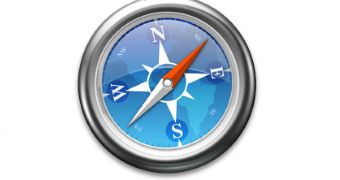Back in June, Apple transitioned the native browser of the Mac OS X platform to Windows. Safari was released for both 32-bit and 64-bit versions of Windows XP and Windows Vista. Safari 3.0 and the subsequent updates introduced to the browser were essentially an early taste of Mac OS X 10.5 Leopard migrated on Vista and XP. This is where Apple's top inconsistency comes into play. The Cupertino-based company has done little, next to nothing in order to ensure a smooth transition for Safari 3.0 on Windows.
Although Apple might not accept it, the Mac OS X visual style is by no means a generalized aesthetic standard. For Safari to swap operating systems without a single design alteration to reverberate through its graphical user interface is a marketing mistake. On Windows Safari looks exactly like on Mac OS X. While the Mac OS X GUI is somewhat of an Apple trademark, Safari on Vista and XP looks and feels like an alien browser.
Of course, Apple's perspective is that this is the way it's supposed to be as Safari delivers an "elegant user interface. Safari's clean, sleek look lets you focus on the web instead of your browser. The browser frame is a mere one pixel wide. You see a scroll bar only when you need one. You see no status bar by default - a blue progress bar fills the address field as the page loads - giving you more room to browse and view the web."
In this respect Apple has something to learn from Microsoft. And since Safari is still in beta it's not too late to incorporate the Windows style of GUI into the browser. Safari 3.0 is scheduled for general availability in October, concomitantly with the release of Mac OS X Leopard. It will be a welcomed detail from Apple, to integrate Safari for Windows with the visual style of, well... Windows.
In contrast to the Apple approach with Safari, Microsoft is currently building Office for Mac 2008. And one of the main concerns of the Redmond company was the user experience. But the Mac user experience. The Microsoft Macintosh Business Unit could have simply replicated the Ribbon/Fluent UI in the Office 2007 System for Office for Mac 2008. But they didn't.
"Mac users have strong expectations about their user interface. We're often told by our users that they definitely want us to look Mac-like. The Mac UI one of the strengths of the platform: once you learn how to do something in one application, you can be reasonably assured that this lesson will apply to other applications too. Mac users expect a menu bar at the top of their screen with an Apple menu, an app menu, then File and all the rest of them, finishing up with the Help menu. We could have just left the Apple and app menu in place, and ignored the rest of it," revealed Nadyne Mielke, User experience researcher, Macintosh Business Unit.
Microsoft worked to ensure a Mac-like experience with Office 2008. Apple did not even bother with Safari. And it's not that Windows users have little expectations of their GUIs. Or that they want the standard Mac user interface on Windows. The fact of the matter is that Apple failed to ensure the integrity of the Windows user experience with Safari. And as long as the Cupertino company continues to do so Safari will not matter on Windows. Almost four months after it was released Safari accounts for just 0.5% of the browser market. This despite Apple having applauded one million downloads in the first 48 hours of the release. Could it be that Windows users are not warming up to Safari?

 14 DAY TRIAL //
14 DAY TRIAL //